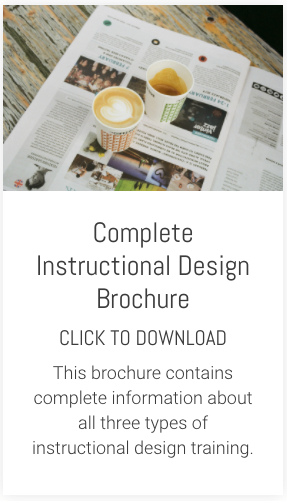I’ve written a lot over the last few months about the significance of shifting from a training-focused paradigm to a performance-support focused one. It’s a big shift. Understandably, plenty of people feel like this is me saying, ‘do away with your training events.’
Why training still matters — but needs to evolve
Definitely not the case. But it does raise a big question that people often ask:
"What would training look like if it were designed with performance support in mind from the start?"
Let’s dig into answering that, to see how you might refine what you do during a training event, when designing for a more performance-support focused paradigm.
It’s easy to see performance support as a nice ‘add-on’. Something to highlight to the learners towards the end of the event, as a rather perfunctory ‘transition to the workplace’ segment. I confess, I’ve run my fair share of such segments over the years.
Unfortunately, this approach will pretty much guarantee that your performance support solution gets little use or has low perceived value.
From event thinking to performance thinking
So, if you are providing performance support tools or materials, then they need to be introduced and used as an integral part of the training – not as an afterthought.
The question remains: 'How to do that?'
In our impact and instructional design programme, we introduce attendees to a very simple, very flexible but nevertheless very robust design flow that works very well during in-person and live online events.
It’s a three part design flow. It starts with presenting to learners, moves to providing structured practice, and finished with much less structured extended practice. The idea being that as you go through this sequence, you are helping the learners’ capability and self-direction to increase
From a learning design point of view, this is about providing multiple points of practice that is highly interactivity. Learners gradually become more autonomous and increasingly confident in their ability to apply what they are learning.
Ideally, by the time you reach the extended practice phase of a session, the trainer will be able to fully step back, observe the learners and only provide feedback (where needed) during a group de-brief after the activity.
The good news is that from a performance support perspective, this is a very effective design flow, too. The difference comes in how you think about and design your practice activities.
What a performance-support-focused training session looks like
So, from a learning design perspective, a good flow of practice activities will help the learners to process and embed what they have learnt; the only ‘external’ assistance comes from the trainer’s input during the structured practice stage and any feedback or de-brief after the extended practice stage.
From a performance support perspective, the structured and extended practice activity stages of the flow are the perfect moments to enhance that trainer input and support by introducing and phasing in use of the performance support tools or materials.
This familiarises learners with the tools and how to use them; and positions them as the natural post-training ‘go-to’ which will help to get the job done.
Bringing performance support into the classroom
For example, imagine a training event that is focused on helping learners to plan and prepare annual performance reviews with their team members.
The course design analysis phase highlighted the benefit of providing a simple performance support tool to guide learners through the planning and preparation.
Having learners use the planning tool as part of any practice activity makes the practice much more authentic; and, ensures the learners see the tool as part and parcel of how to apply what they are learning.
Training as the gateway, not the goal
All this highlights clearly that selecting and designing performance support tools or materials must be an integral part of your existing impact and instructional design process. Not an afterthought. The training is vital but only the first stage of a journey to the really important goal: improved workplace outcomes.
Achieving this level of performance support integration requires L&D to get close to the business. To have a good understanding of what desired workplace performance looks like. To be clear about how knowledge and skills covered during a training event are applied in the learners’ workflow, once they are back on the job.
If that sounds a bit challenging, it shouldn't. In reality, performance-support-focused training isn’t a different discipline — it’s simply the next logical step in doing what great L&D has always aimed to do: help people do their jobs more effectively.







